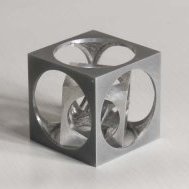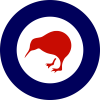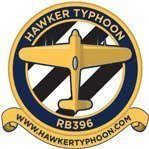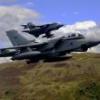Search the Community
Showing results for tags 'kinetic'.
-
After its beautiful Grumman S-2E/G Tracker (http://www.britmodeller.com/forums/index.php?showtopic=74094&hl=tracker), Kinetic is now working on the short version of the Stoof, the S-2A, with catalogue ref.48039. Source: http://s362974870.onlinehome.us/forums/air/index.php?showtopic=257024 V.P.
-
Kinetic is to re-release its 1/48th Grumman EA-6B Prowler kit with new wings under ref.48044 The original kit ref.48022 In box review: http://www.cybermodeler.com/hobby/kits/kin/kit_kin_48022.shtml The box art of the "new" Prowler kit ref.48044 Source: https://www.facebook.com/Kineticmodel V.P.
-
New boxing for the Kinetic 1/48th F-16A/B NSAWC Adversary - ref. K48004 Block 15 Markings: - NSAWC 04 TOPGUN 90th Anniversary 2009 - NSAWC 60 2006-2009 - NSAWC 53 2004 Decal printed by Cartograf Decal design by FighterTown Decal Model Feature: Training ACMI Pod Related Links Source: http://www.luckymodel.com/scale.aspx?item_no=KI-K48004 V.P.
- 50 replies
-
- 1
-

-
- F-16
- Fighting Falcon
-
(and 1 more)
Tagged with:
-
While I blatantly put off riveting my 1/48 corsair in this GB, I’ve decided to do a relatively quick OOB build from the stash. This one was a bit spur of the moment @modelling minion This fella… sprues look pretty good, (although with kinetic’s 2 in 1 box that one gets a ton of waste. not sure of the logic as theres enough parts to make approximately 1.5 models.) and stop… …actually i was going to post all the sprues here, but they’re all out there on multiple sites photographed much better than i can… so i wont. if one is interested you can find reviews via scalemates. but just wanted to personally share that some detail is great and some isnt… and the decals are ace although i might stencil the roundels as they look a pain round the intakes glue has been used! and we’re away… I will load it with some ground attack ordnance of course
-
Having just finished reviewing this new kit from Kinetic, which was sent to us by Lucky Model in HK. You can read the review here, and I'm afraid that I caved in last night and began building it I started with the cockpit, expecting to get the seats done before I went in for tea, but I ended up building the cockpit, the sidewalls, and many of the other assemblies glued together so that it will be ready for sanding and painting as appropriate. The cockpit goes together well, with enough parts to make for a detailed rendition, although I would have liked to have seen some decals for the instrument panels, so I'll have to get some of my Airscale decals out to detail that area up with the help of some cockpit refs. Clean-up was made easier by the inclusion of a lot of the sprue gates on the mating surface, so you can just nip them off and give them a light sanding to tidy up. I suspect the instructions show the wrong part numbers on the instrument panels, as the front one appears too wide. Check that before you glue, and there are also a few parts where the numbering has gone awry, but they're easy to guess, and I managed to guess correctly. The seatbelts were a bit of a faff, but that's PE for you I tried to add a little variation between the two seats, which seems to have worked. Looks good, doesn't it? The wings fit together neatly too, and the join under the wings is pretty impressive, which probably won't need any filler. The nacelle fronts go together nicely, hiding the joins along piano-hinges that allow the real cowlings to open for maintenance. I also put together all the other flying surfaces, which were also flawless in construction, with very little clean-up required when the glue is fully cured. I've taped things together for the first photos of the airframe, but it won't be long before I can close up the fuselage, as the cockpit and nose gear bay are the only things withing the space. Neato! The wheels, tanks and pylons just fitted together nicely with no sign of dramas, but I decided to leave off the aft engine nacelle panels so that I could paint the exhausts properly before inserting them. Fit is very good there, and the rear edges of the insert are nice and thin, doing a good job of representing a single sheet of metal. The same goes for the exhaust plugs. They're pretty short, but have false perspective inside, which gives the impression of depth. I might put some Black 3.0 in the very bottom, fading it out to a rusty metallic sheen toward the lip. The next job is to uncover the spray booth, which has become a bit of a dumping ground over the last few weeks
-
It was in late 2007 when a new chinese brand called Kinetic released its first kit a new tool 1/48th Republic F-84F Thunderstreak (link) with the appropriate reference number 4801. This kit was later reboxed twice by Italeri in 2009 and 2011 (link). Kinetic is soon to re-release this kit under new ref. K48068. Source: https://www.facebook.com/Kineticmodel/posts/1621979917969113 Box art V.P.
- 12 replies
-
- 1
-

-
- Thunderjet
- F-84F
-
(and 1 more)
Tagged with:
-
Kit - Kinetic 1:48 Paint - All Tamiya acrylics Decals - Kit Extras - Missiles from RoG Rafale kit, Pavla resin 'Dash 5' nose, Aires resin & etch MB10 seat. Mirage 2000C-9 United Arab Emirates AF Al Dhafra AB 2010. Had this kit for a long time but like a couple of other recent builds, been waiting for my 'skills' to get to a point where I feel confident enough to have-at-it !!. It's not a straightforward build by any means, and the crude instructions (with no paint call outs) do not help much. But because I've built the Kinetic F-5A & Alpha Jet, I was sort of prepared for a more challenging build process. Where this kit excels is the surface detail, it is exquisite with beautifully refined panel lines, sharp trailing edges and crystal clear canopy parts. There's A LOT in the box, including four separate fins and many of the sprues from the 2000D/N kit of which for this version you only need one of the fins - because those parts were moulded even better than the 'fighter' parts, where possible I swapped them over. The very pale camouflage grey was mixed using the (in)famous Mk.I eyeball method and the darker tone is Tamiya Medium Sea Grey (XF-83) straight from the bottle. I freehanded the pattern at first using my new Dragonair AB with a 0.2 needle/nozzle but it was just a little too 'vague' so I masked the edges with Blue-Tac and redefined the edges which was absolutely the best call, glad I did it. Not too much in the way of weathering as every photo that I went to showed UAE Mirages in fairly immaculate condition. I added a few streaks under the fuselage with dry-brushed oil tones and more heavily on the underside of the drop-tanks where the cr*p would be kicked-up from the runway surfaces. Not too much else to say, yes it's a bit of an effort to get built but given that the 1:48 alternatives are the Jurassic Era kits from Esci & Monogram or the very rare Heller kit then this is the 'only way to go' if you want a Mirage 2000 on your shelf - and I really did ! - feel free to comment, criticise or ask any questions. Following very soon will be something British in 1:72, in the meantime all the best from New Zealand. NOTE: I'm aware of the scratch on the left side of the canopy and am slowly reducing it with gentle sanding and polishing... it already looks better than in the photos. Ian.
-
Hello guys, Here is my last completed build and the first of 2022. This is the Italeri reboxing of the Kinetic kit. It's a plane from the french AF Escadron 3/3 Ardennes during Operation Musketeer (Suez crisis, 1956), based in Akrotiri, Cyprus. The ID stripes are not the usual Yellow/black but rather midstone and white/black. The number of allied aircraft on base (over 200) led to a lack of yellow paint and use of replacement hues. As usual your comments and inputs are most welcome. You can visit the complete build article on my blog, following this link : build article Best, Stef (#6)
- 24 replies
-
- 51
-

-
For my entry in the GB I am going to be building the recent Kinetic 1/48 F/A-18A/B/CF-188 as a Spanish Air Force example, but not in the usual grey scheme (even though some of these get spectacularly dirty and weathered) but rather as one of several ex US Navy aircraft that were sold to Spain after they were retired from VFA-127 (Cylons) where they were used in the adversary role. As adversary aircraft they had been painted in a disruptive desert type camo scheme of sand and brown and they were delivered to Spain still wearing this scheme, they were re-painted when they went through scheduled maintenance later in service but looked very good in their adversary scheme with touched up areas where the US Navy markings were over painted and with the colourful Spanish roundels applied. So onto the kit. This is the boxing that I shall be using; Lots of plastic bags full of sprues; And a very nice, large and comprehensive decals sheet; Enough codes there to build any Spanish Hornet, happy days! Though as I will be doing an ex adversary the warnings and stencils need to be in the original adversary colours so I have bought a set of decals from Hi Decal which has one of those as an option on it to take care of that issue. The model should like the aircraft shown on these images of the scheme on the instruction sheets from a decal set by Series Espanolas which also do a dedicated set for these aircraft; Now having finished my Draken a couple of weeks ago I decided to make a start on this but keeping it below the 25% margin, fortunately there is quite a bit that can be done before you are in danger of breaching this limit and ( surprise,surprise) I started with the cockpit. The cockpit tub and IP come with nice raised details for switches etc which I thought would look good with some detail painting and drybrushing rather than removing it all and replacing with 3D decals so that is what I did and this is what the cockpit tub looks like now with the Joystick and pedals fitted; The IP got the same treatment, now Kinetic supply decals for the screens which represent the MFD's if they were powered up which is not appropriate to an aircraft parked on the tarmac without someone sat in it running through checklists so they were painted instead and the decals for the instruments are way too big to fit into the recesses on the IP so they just got a basic paint job too. This is how the IP looks; I have also built up the undercarriage legs; And painted the main undercarriage bays; Now while this is a modern kit I have to say I am not impressed by the amount and location of some ejector pin holes on some parts, the undercarriage legs being particularly bad, and the sprue gates which are really big in places and on the mating faces of the parts too. The instructions are pretty bad too, being very vague about how some parts fit together and on where to drill holes for parts to fit and also being just plain wrong with the part numbers they tell you to fit, there are at least 2 parts which the instructions call A6 which are completely different! Having built a Kinetic kit before (Harrier T.10) this is not the first time I have come across this issue but there really is no excuse for it at all, might be an idea to have someone proof read them first or even to try and build a model using them, shock horror!! Anyway lots more to do so thanks for looking in and hopefully it won't be much longer before there is another update. Craig.
- 164 replies
-
- 14
-

-
The Kinetic's future 1/48th AMD-BA/Dornier Alpha Jet E first CAD drawing is here: Source: http://s362974870.on...howtopic=255517 V.P.
-
Hi all. I just finished my 3rd 1/48 Harrier of the year. After Kinetic's AV-8A and Hasegawa's AV-8B, I wanted to build the Kinetic RAF GR3 version. This kit is basically the same kit as the AV-8A, except for the decals. For this build I used Eduard's interior and exterior pe sets and a Master pitot tube. The kit has very nice surface details and the fit is very good. Only a few spots need some extra attention and a bit of filler. Nothing major though. The model was painted with Mr Hobby acrylics, colour numbers H330 and H331. This was airbrushed in thin coats over an Alclad black primer base. A wash was made from Abteilung 502 oilpaint and AK white spirit. The kit decals were used and they are very good. Printed by Cartograf and among the best I've ever used. Thank you for watching. René.
- 45 replies
-
- 108
-

-

-
Hi guys, so this will eventually be the spot where you'll be able to follow-on with me while I build my Kinetic Su-33 + Quinta cockpit detail set. But that won't be for a couple of months as I have another "What if" in the pipeline atm (RAF Skyhawk). The very basic background story to this build is, 20 ex-Russian Navy Su-33 fighters were bought cheap (engines and spares included) by the People's Liberation Army Air Force and put into service in Niger, Africa. Serving as part of a forward deployed unit (Su-33, J-20 and J-10) protecting precious mineral mining operations in the South of Niger. With the United States Government desperate to holt even more advancements in Chinese computer chip technology a U.S. Military Special Forces detachment (Delta Force) was forward deployed to Cameroon to try and get close to the mining operations to see if it could be sabotaged. In support of the Special Forces detachment was a mixed squadron of US Navy F-18E Super Hornets and one squadron of USAFA (United States Air Force Africa) F-16's. It was decided to camouflage the jets as Cameroon Air Force aircraft to alleviate any Chinese suspicions about their intentions in the region. With Cameroon politicians sufficiently convinced (bribed ) into believing this move would be a beneficial one for the country the way was set for the building of the base of operations in the north of the country. Things turned hot one day as a hotshot Navy pilot got a bit too close and was shot down by a Chinese S-400 SAM system. The subsequent rescue operation for the ejected Hornet pilot was a complete failure with the Australian Army MRH-90 Taipan rescue helicopter being shot down along with its onboard SAS rescue team. Following SEAD (Suppression of Enemy Air Defenses) operations lead by USAF F-16's were neutralised by J-20's and Su-33's. The camouflage scheme for the US Navy F-18E Super Hornets looks like this. (I intend building the Meng kit for this with a Reedoak sitting pilot figure in the cockpit, probably late 2022 ) As I haven't drawn-up an Su-33 profile yet I'll be using top and eventually side views of an Su-35 so I can get an idea of what sort of camouflage scheme I'm going to settle on for this build, and I'll be bringing you along on this journey of discovery so you can see how things evolve as the project moves forward. For those of you that are familiar with my work you'll know that I love "What if?" desert schemes more than anything else. And this hypothetical story lends itself to a lot of possibilities, both now and in the future as I could include not only a Super Hornet as seen above, but also the other aircraft types involved in the story as it too evolves along with the project. The PLAAF forward airbase at Kaadjia in Niger obviously doesn't actually exist. but looking on Google Earth the location does. The desert in this area looks very bizarre and has lots of variation in colour and texture. So, for me it's a Smörgåsbord of camouflage possibilities. I will spend some weeks messing about with various schemes until I decide on the definitive scheme. All of which I will share with you here. Cheers Richard.
-
In my opinion, one of the most elegant post-war aircraft of the Finnish Air Force was the French manufactured pilot trainer jet Fouga Magister CM.170. A total of some eighty Fougas served in the FAF between 1958-88. There are still a couple of airworthy Fougas left seen mainly in air shows. This plane type was also used by many other countries for pilot training purposes but in Israel the Fouga Magisters were also operational in combat duties during the six days war in 1967. One distinctive feature of the plane was the very loud, high-pitch whistling of its two Turbomeca Maribore turbo jets. I built the Fouga from a Kinetic 1/48 scale dual combo kit . My model depicts the Fouga Magister FM-45 in the markings of the Pilot Training Squadron of the Aerial Combat School in 1987. The very plane is nowadays in display at the Finnish Air Force museum in Tikkakoski, Central Finland. The quality of the Kinetic kit was quite ok but the instruction sheet was really poor with a lot of errors and omissions. Without the info and the pictures on the net it would have been difficult to finish the build successfully. The decals for the model were from Max Decals and the day-glo strips I made from a Microscale's decal sheet. I painted the model with Alclad White Aluminium plus some panels and details with Vallejo Air silver, aluminium and steel. For the cockpit I bought masking tapes from Montex. I also scratch built and amended a lot of FAF details to the model. The last flight of FM-45 in 1987
- 24 replies
-
- 40
-

-

-
- Kinetic
- Max decals
-
(and 1 more)
Tagged with:
-
With reference to the Harrier GR1/GR3 and the Sea Harrier FRS1 - is the wheelbase between the nose u/c and main u/c the same? ( Or the distance between the two undercarriage leg mounting points?) Doing some research into a potential kit bash between an ancient Tamiya FRS1 and the unused FA2 parts in the Kinetic GR3 and have discovered that the Tamiya nose wheel bay appears to be ~5mm too far back. (Compared to the Kinetic GR 3 fuselage.) Can anyone confirm that the two should be the same? Peter
-
Good day! F/A-18 Hornet in colors of the Blue Angel squadron. It's only mater of taste of course, but in my mind this elegant fighter jet looks moore impresive in this color scheme. As for the model. It's my first experience with the Kinetic kit and i'm absolutely sure it's the last one from this manufacture. The only part with good fitting it's cabin, all the other...; - Two halfs of the fuselage, upper and bottom have a different lenghts. If make a suggestion that the model was developed using 3d modeling with CAD systems, so it's mystery for me, how it's may be. - Intakes. Troubles by it's self during the subassembly construction, and a big issues during the installation this subassembly in the fuselage. - Main landing gear. If you wanna that's this ellement looks like a real one, will be necessary to make a hinges from a zero point. In the original from the box, they are absence from word at all. - The wheel bay of the main landing gear. All simple is here. The huge visible spacing has occurred after mounting this detail into the fuselage, so a lot of epoxy putty to assist you. - Canopy. The instruction offers two variant to make canopy in close or open position, it's in the theory. And my first decision was to make it close, but some correction was made by the reality. If briefly, the new canopy you will need, to make it in the close position, since the both parts don't correspond by each other softly to say. And in the addition for this a bad fitting between canopy and fuselage with a large gap. - Decals. Decals printed by cartograf are excellent by itself, but why there are no stencils for cabin and cabin tools, despite the same kit in the other color scheme, there are? All the other are excellent. And despite the fact a lot of mistake were made by my self during the building, i'm hope that the final result looks like a Hornet. Thanks for looking.
-
I've heard great things about these Kintic Harriers and now I have 4 of various marks in the stash I decided I'd better build one. This is the GR3 which will be RAF Germany in the mid 80's scheme. 'Everything looks good in camo wrap' Hopefully it will provide a balance to my Fonduri Miniature Grognard in the French Fancy GB. Starting soon. Colin
-
Hello all, Here is my "Korean Wolf": a USAF 8th FW F-16D Block 30 aircraft, operating from Kunsan AB (South Korea), seen in its October 2007 livery. This aircraft was scheduled to being transferred to the 18th FS aggressor unit early 2008 and carried the Blue Flanker scheme - in combination with the Kunsan WP tail code - in the few months prior to its actual transfer. Being a Block 40 aircraft, the Kinetic kit comes with the correct bigmouth engine intake and exhaust for this particular type. Also the appropriate front nose panel without antennae is included in the kit. As I had a Black Box cockpit in my stash (for a Block 40 aircraft though and designed for Hasegawa), I thought I'd try that here: … well, it does fit in, but only with quite some work ... I backdated the kit into a Block 30 version, by some simple modifications: Removing the backseater's HUD and adding the top handle Sanding down the kit’s bulged MLG doors and replacing the MLG wheels with earlier (smaller) versions from Tamiya’s F-16C; I also scratched the landing lights to the MLG struts Removing some detail from the inside nose gear door (i.e. no landing light) Adding stiffening plates on the wings/fuselage joints (Astra Decals vinyl) and RAM panels on the nose (cut from Astra vinyl leftovers) Nothing too complicated really - and making it sufficiently matching the aircraft I was building. The kit builds up reasonably well - serious fit problems though around the nose and intake areas, where several places needed some plastic strips between panels and quite some filler, sanding and rescribing work: the fit in these areas is really not good, but I think I got it looking right in the end. Camo colours are Gunze (grey) and Vallejo for the two blue tones (both tweaked to better match pictures of Blue Flanker vipers), with Alclad for the exhaust area. The very nice "Blue Bandit" decals are from a TwoBobs decal sheet. Weathering with oils, taking this reference picture of airframe 87-0378 on f-16.net's database as inspiration: https://www.f-16.net/g3/f-16-photos/album38/album69/87-0378_001 As for the load-out: the AIM-9 is from the kit, the CATM is a modified AIM-9 from the spare box, the ACMI pod is from Hasegawa and the AN/ALQ-188 jamming pod is a Wolfpack resin item. Final touches are droptanks and pitot tube from the Tamiya kit as they appeared to be more refined than the Kinetic ones. Comments always welcome ... and thanks for looking! All the best, Patrick
- 10 replies
-
- 47
-

-
I enjoyed this build from Kinetic. A challenge in places, and the Aires cockpit made a big difference to the overall finish.
- 23 replies
-
- 57
-

-

-
Another winner on approach by Kinetic a 1/48th McDD/Boeing T-45A/C Goshawk - ref. 48038 http://scalemodels.r...-C-Goshawk.html V.P.
-
Serial number 4082 to be built using the Kinetic kit (and decals). Part of the appeal for this particular airframe is the fact that parts of the special livery vinyl overlays were lost en route from Poland to Orland - so I'm aiming to finish one side as it left Poland and the other as it arrived in Norway! As usual, Eduard cockpit etch and seat belts and I think there are some masks lurking around too: Back in a week or so, Mike
-
BAe Hawk T.2 (03852) 1:32 Revell Originally designed as a replacement to the Gnat advanced trainer by Hawker Siddeley, the Hawk first flew in 1974, and started life as a private venture, much like a number of other widely known and loved aircraft. It was designed from the beginning for the training arena with two seats, but the ability to carry offensive armament was also important both for weapons training, and for the improvement of export sales to developing nations that couldn't perhaps justify or afford a single-roled aircraft. It entered service with the RAF in 1976, only two years after its maiden flight, and has remained in service with many updates ever since. A number of variants have been developed since then, mostly for export, including single-seat light-weight fighter Mark 200, and the highly adapted T-45 Goshawk that is used by the US Navy for carrier training. The T1A was a modified version of the original Hawk that can carry weapons such as a gun-pod on the centreline, and a pair of Sidewinder Air-to-Air missiles. This type is also used by the Red Arrows with some minor modifications to carry a smoke pod instead of the gun pod. The T.2 is currently now in service in small numbers with the RAF, with a glass cockpit and improved Adour 915 engine, based on the specification of the Mk.120 and 127 used by the South Africans and Australians respectively. The T.1 is intended to leave service in 2030, but in the meantime, it still serves alongside the more modern T.2. The Kit This is a not a rebox of the earlier T.1 and Red Arrows boxing that we reviewed a mind-boggling 10 years ago, but is instead a rebox of the 1:32 Kinetic plastic, which if you’ve not seen that kit before (and I haven’t), it’s not immediately obvious. The kit arrives in one of Revell’s deeper end-opening boxes, which seems to be made of thicker cardboard to hopefully avoid the dreaded collapse in the stash. Inside are five sprues in a grey styrene, a sprue of clear parts, a fret of Photo-Etch (PE) brass, decal sheet, instruction booklet and one of those annoying safety sheets. The first thing that strikes you as you peruse the sprues is that the tail section of the fuselage is heavily riveted, a feature that was missed off from the earlier kits native Revell. The shape of the tail “hump” looks better too, although whether it will meet the approval of the purists, but a quick Google makes me think it looks OK. The inclusion of PE parts is also novel from Revell, and very welcome as the usual alternative is decals, which are two-dimensional at best. Construction begins with the instrument panels and their coamings, which are well-detailed and have decals for the various screens and buttons, which should settle down over the raised details nicely with some strong decal solution, and has a PE HUD frame into which the two clear parts fit, and a lens part drops into the coaming. The rear seater’s panel is without the HUD, and has one of the MFD screens in a black cowling where the HUD would be. The canopy is made next, which is a fairly unusual step, and this version has the det-cord canopy breakers moulded-in, but as they are raised, you won’t be able to flood them with white acrylic paint like you could the old 1:48 Airfix kit. You do get a blast screen for between the pilots, and a pair of styrene rear-view mirrors for the front of the canopy. The crew seats are identical, and made up from two halves into which the seat pad is inserted, and the headbox top with the drogue-pack moulded-in slips into the top. Then the PE belts are shown being folded and installed over a few steps, including the short groin-belt that has the push-release buckle at the top end. The two ejection seats are added to the cockpit tub after removing a small area of raised detail in the starboard rear-seater’s side console, then the HOTAS duo and some rudder pedals are added to both cockpits and finally the rear bulkhead is glued behind the rear seat using a slot and tab to align it well. A full set of intakes are included on the sprues, replicating the Y-shaped trunking seen on the real thing, stopped-up at the rear by a representation of the front fan and bullet of the Adour engine. The two trunks are joined together at the rear, and each side has half of the starter exhaust moulded into the top, which will exit through the hole on the spine later on. At the rear the exhaust trunk is fitted with a rear face of the engine and has a very slender lip, thanks to some careful moulding. These two assemblies go into the fuselage on large sturdy pegs to ensure a secure fit and minimise any movement of the parts. Before the fuselage can be closed up, the single-part nose gear bay should be painted up and inserted, and this too has some decent detail moulded-in, although little will be seen once the leg is in there and the doors have been applied. Once the fuselage halves are together and the seams dealt with, an insert is slotted in under the rear with the strakes moulded into it, and the outer halves of the intakes can be joined to the inner sections that are moulded into the trunking. The spine behind the cockpit that has separate “bunny ears” for the ram-air intakes that feed the crew air-conditioning unit is also made up, but installed much later in the build to give you adequate chance to lose it under the clutter on your desk. With the addition of a few PE aerials under the rear of the fuselage, attention diverts to the wings. The lower wing is full-span as you’d expect for a low-wing monoplane, and has a box around the gear bay apertures against which you glue the detail inserts, which removes a lot of the opportunities to get it wrong. A central insert goes over both inner bay halves, and the upper wings are glued in place, with the bay roof detail moulded into their inner surface. The completed wings are then offered up to the lower fuselage and glued in place, adding some nav-lights on the intakes, and more strakes on the fuselage beside the tail. The elevators have separate swash-plates that fit into recesses, with the tab going through them into the socket in the fuselage, then you get the option of an open or closed air-brake, being careful to check that it doesn’t prevent the aircraft from sitting square to the ground once finished. A skin attaches to the blank space over the exhaust, and some blade antennae are slotted into the fin, next to the avionics box that projects from the leading edge. The main landing gear legs are a single part, with the retraction jack added as they are inserted into the bays along with their two captive doors, and the three-part wheels, which have circumferential tread on the two-part tyres. A little link is fixed between the bottom door and the leg before they’re inserted into the bay, with the last inner bay door fitted along the centreline. The nose gear leg has a split yoke with the three-part tyre trapped between them, then it is installed with its three gear bay doors and landing light attached to the starboard door. The flaps are separate, and can be posed retracted or deployed by using the different actuator fairings, and for the extended flaps, adding the additional spacer parts that pop out to fill the gap. Another small blade antenna is glued into a recess in the trailing edge fairing on the wing underside, and a centreline tank fits into two pre-prepared holes between the main gear bays under the wing. With the model righted and standing on its own wheels, the front spine insert with the bunny-ears gets fitted, and behind it two PE grilles are inserted into recesses in the fuselage, which has a realistic centre support and twin recesses behind it to give it a 3D look. The wing is outfitted with twin fences each side, and the windscreen with canopy closed or open glues in over the cockpit. There are a ton of sensors, aerials and blade antennae around the fuselage and nose, which includes a few clear ligts, nose pitot and AoA sensors on the sides, plus a crew-step to get the crew in and out. A set of Sidewinders are included for the wingtip pylons, with the option of leaving them off and covering the mating surface with an aerodynamic cap. If you are going to use “live” Sidewinders, there are fins moulded in along the seamline, plus separate perpendicular fins to add, and an exhaust insert in the rear. For a training round the instructions tell you to remove all the fins after you make it, and the painting guide gives you painting schemes for both options. Markings The decals are printed in Italy by Cartograf, which is a guarantee of good registration, sharpness and colour density, with a thin matt carrier film cut close to the printed areas. As mentioned earlier, the seatbelts and instrument panels are also supplied as decals, although the belts are identical to each other, and will of course look a little flat once applied unless you apply them to a very thin substrate to give them some thickness. Why bother when there are some nice PE belts on the brass sheet? There are two schemes on the sheet, both in black, which is the standard scheme, although one has a special tail scheme. From the box you can build one of the following: No.4 Sqn., RAF Valley, May 2016 No.25 Sqn., RAF Valley, Mar 2020 The colours are named in a key at the front of the instruction booklet, which is handy if you don't use or have access to Revell paints, although the dreaded paint-mix requirement for the limited Revell paint range can be a little frustrating at times. The Sidewinders are mainly Barley Grey, which is a mix of two Revell colours, and is never an ideal solution, especially when so many paint manufacturers have that colour readily available from the tin. An odd faunish-orange colour is used on the lights on the intake cowling lights, which is a mixture of clear orange and clear blue. Strange. Check your references if there’s any doubt. Conclusion It’s nice to see the modern Advanced Jet Trainer (AJT) Hawk T.2 in big scale for all you big scale adherents, and the availability in a Revell box will help it reach a wider market than perhaps the Kinetic plastic would otherwise see. One workmanlike and one fancy scheme gives you a choice, but with only 28 airframes in service at time of writing, and gloss black being the standard scheme, the fancy bits are all that they have to differentiate between them. Finally, be prepared to do a little polishing of your black paint job, as that always gives a black surface more realism to my mind. Check out Ultimate’s Polishing System if you haven’t got some already. Highly recommended. Currently, Revell are unable to ship to the UK from their online shop due to recent changes in import regulations, but there are many shops stocking their products where you can pick up the kits either in the flesh or online. Revell model kits are available from all good toy and model retailers. For further information visit or
-
Entry No.2 will be built from the Kinetic F-16DG/DJ Block 40/50 kit - originally purchased at a very good price as I wanted the CC sprues (Harm missiles + pods). When it arrived those sprues were no longer included and had been replaced by two MER + Cluster bomb sprues. However I've since managed to do a swap to get a Harm sprue. Although this kit only has parts for an F-16D, I can take the unused F-16C parts from my Polish C/D boxing and build this as 92-0920 in the (Two Bobs) 2015 special livery reflecting 50 years of Wild Weasel operations: As the decals include a comprehensive selection of inert missile markings you can expect this one to have a fairly full loadout! Mike
-
M3A3 Bradley Cavalry Fighting Vehicle (K61014) 1:35 Kinetic Model The CFV variant of the Bradley is a scout vehicle that carries a crew of five, including two scouts that are able to dismount whilst leaving the vehicle fully crewed and ready to depart if necessary. It also carries additional communications gear, but is externally very similar to the M2 Bradley, with the same Bushmaster cannon and the ability to carry a TOW missile pack on the side of the two-man turret. It was designed in the 1990s as an update to the ageing M113, but ended up supplanting it in US service, and it has been a success in every theatre it has served in, although during the Gulf War a number were destroyed in blue-on-blue incidents that resulted in better recognition systems being employed from there on in. It is well-liked amongst crews, and the upgraded armour packages have improved survivability in a changing battlefield that includes substantial amounts of urban patrols. The A3 is a combination of new-build and converted A2s, and brings a major improvement in the on-board systems that affect the crew's situational awareness, allowing them to work better in concert with other Allied forces, including both the Apache helicopter and Abrams tank, two of the main weapons systems they are likely to be deployed with. In an age where anti-tank missiles have become a major danger to any AFV due to their ability to pitch-up and plunge accurately downward through the thinner top armour, the roof of the Bradley has been upgraded with titanium, and also includes all the previous upgrades to the A1 and A2 variants. The Kit This is an enhanced reboxing of the 2014 Orichi (no, I'd never heard of them either!) kit from Kinetic, and arrives in their usual top-opener box, with a painting of a NATO Euro camouflaged example on the front, with a small badge acknowledging CrossDelta's assistance with the included decals. Inside are seven sprues and two hull parts in grey styrene, plus a single dust-jacket for the top of the gun mantlet in a little ziplok bag. A sheet of Photo-Etch (PE) brass, a tree of poly-caps, decal sheet and the instruction booklet are also in the box, along with a separate painting and markings guide, which is in colour and printed on both sides of a glossy sheet, with profiles provided by AMMO. Detail is good throughout, with lots of surface detail such as anti-slip coatings, vents and fasteners for the appliqué armour, which is followed through with the optional ERA (Explosive Reactive Armour) package parts that are included, and is used on both decal options, but can be left off if you are going off-piste for your markings. Some slide-moulding has been used to improve the detail and simplify construction, especially on the main hull parts, which have the side-skirts and armour upstands moulded-in along with other detail that would once have been impossible to include. It still needs an additional number of rivets applying however, which can be found on the sides of sprue A. Cut these off with a sharp blade, and glue them on where indicated, which is probably best done early in the build process to avoid either forgetting, or knocking off any delicate parts. Construction begins with the lower hull tub, which is festooned with the suspension swing-arms and dampers, final drive, return rollers and finally the road wheels, which have a poly-cap at their heart and have separate tyres that will please anyone that doesn't like painting these in-situ. The idlers and drive sprockets also have poly-cap centres, and once fitted the remains of the final drive housing are added to the lower front along with towing shackles and a pair of small plates. Tracks are fitted early on, and these are of the link-and-length type, supplying all the straight links as a single part, which are joined with a few individual links, a short length on the diagonals, a few more links, and then another length to go over the top. There are a few ejector pins on the inside face of the tracks, but these are raised, so should be pretty easy to deal with in short order. The upper hull fits over the top of the lower hull at this stage, and ledges on small upstands inside the upper that will need careful alignment before the glue sets up, as there is a little "slop" at the rear on my example. The hull is closed up by adding the thick rear door, which has an ovalised smaller entrance in one side, tow shackles and towing cable attached to the outside. The frame fits into the rear and the door glued into that, as there's no interior, and the rear light clusters fit on the stowage boxes either side of the door. The decal options both have the ERA blocks on the sides, glacis and turret, but there is an option to leave these off, which exposes the appliqué armour that is moulded into the upper hull. If you elect to do this, you will need to add a little putty to the shallow sink marks that have occurred where the hull roof and sides meet, and to do this you will need to take care not to remove the detail of the panels. There are some alternative parts for the non-ERA Bradley, which you can use. The ERA blocks for the sides are moulded as a large single part, with front and rear angled sections finishing off the runs, while a mesh cover for the two engine grilles, another behind the turret, pioneer tools, an exhaust director, mudguards, and the mounting brackets for the glacis ERA blocks are all installed. The front blocks are fitted in three sections, and a couple of shot-trap eliminators are added around the turret rim and rear deck, and then the rest of the upper surfaces are detailed with the large crew hatch, more pioneer tools, lights, sensors and so on before the turret is constructed. As this is a no-interior kit, the interior breech is present in a limited form just to enable the barrel to elevate, with poly-caps added to permit the gun to stay put, coaxial machine gun, and barrel sleeve being added before it is sandwiched between the turret halves. The clear commander's vision blocks are inserted from inside the top section, and the turret ring is fitted to the underside, along with the smoke dischargers on the lower cheeks. The ERA blocks are attached to the appliqué armour panels, the various turret-mounted sensors are added, and the commander's protective glass shroud is fitted to keep him safe when he's got his hatch open. The barrel for the Bushmaster 25mm cannon is fluted for cooling, and is nicely slide-moulded on the edge of one of the sprues, with a hollow muzzle and flash-hider slots into the bargain. The bustle stowage has a number of extra ammo boxes for the coax MG arranged around the back, and the big optical sensor box on the top, loader's hatch and the TOW installation (handily attached with a poly-cap) all go on to make the small turret rather busy. The driver's hatch is last to be made up, with a large hinge part with PE vent, clear vision blocks and armoured covers included. The model is completed by installing the turret and driver's hatch on the model. Then it's time for the paint and decals. Markings There are two decal options available in the box, with colour profiles provided by AMMO, and decals printed by Decals are by Cartograf, which is a guarantee of good registration, sharpness and colour density, with a thin gloss carrier film cut close to the printed areas. Apart from the stencils, there are a selection of numbers and letters from A to G to enable the modeller to customise their model. The two options are the NATO three colour green/black/brown scheme, and the more familiar desert scheme, with no information forthcoming regarding their units, location of era of operation. There is also no placement guide for the exterior decals, which is going to need a little research on your part, although some of the decals for the front and port side are visible on the boxart. You can find a copy of the instructions and profiles here, although the product hasn't yet been added to the product listing on the Kinetic website. Conclusion Apart from the slightly rushed feeling for the painting and markings section, this is a nicely detailed kit of the Bradley that should do well for Kinetic. In association with
-
I've got a few kits in the nearly finished category and this one is the one I started most recently. Finished first probably because it was such an enjoyable build. Built out the box with Hataka Orange line paints.





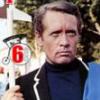

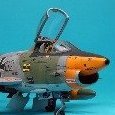
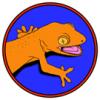
.thumb.jpg.d3635a7ef6507d35f372dd09671fe96f.jpg)

